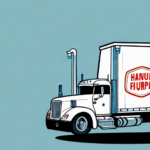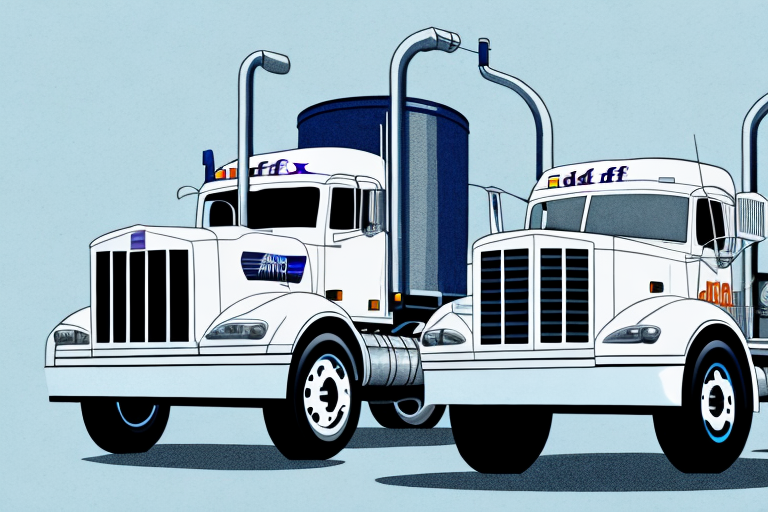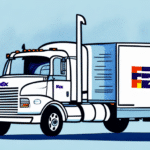The Importance of Efficient Delivery Routing
As the e-commerce and delivery industry continues to grow, the significance of efficient delivery routing cannot be overstated. An optimized routing strategy not only saves time and fuel costs but also enhances customer satisfaction, making it a crucial component for businesses relying on logistics.
Enhancing Operational Efficiency
Delivery routing involves determining the most efficient routes for delivery drivers to visit multiple destinations while minimizing travel time and distance. Accurate routing enables drivers to deliver more quickly and cost-effectively, which can lead to increased productivity and reduced operational costs. According to a Statista report, optimized routing can reduce delivery costs by up to 20%.
Environmental Impact
Efficient delivery routing also contributes to a reduced carbon footprint by minimizing fuel consumption and lowering greenhouse gas emissions. The Environmental Protection Agency highlights that transportation accounts for a significant portion of total emissions, and optimizing routes can play a vital role in mitigating this impact.
Customer Satisfaction
Timely deliveries enhance customer satisfaction and loyalty. A suboptimal delivery route may lead to missed or late deliveries, resulting in unhappy customers and increased operational costs. Providing reliable and fast delivery options is essential in maintaining a competitive edge in the market.
The Role of Technology in Delivery Routing Optimization
Technology is pivotal in achieving efficient delivery routing. Advanced tools such as GPS tracking, geocoding, mapping, and route optimization software enable businesses to automate routing processes, generate optimized travel directions, and provide real-time status updates.
Route Optimization Software
Software solutions like Google Maps utilize historical road data and real-time traffic information to create the fastest routes. Specialized route optimization tools such as Route4Me and Descartes offer more tailored features for logistics management, enabling businesses to handle complex delivery networks efficiently.
Telematics and Real-Time Tracking
Telematics devices provide real-time data on vehicle location, speed, and fuel consumption. This information helps in monitoring and optimizing fleet performance. According to a study by Geotab, businesses can achieve up to a 15% improvement in fuel efficiency through effective telematics usage.
Customer Communication
Real-time tracking systems allow customers to monitor their orders, providing accurate delivery times and updates. Enhanced transparency fosters trust and satisfaction among customers, reducing the likelihood of complaints and returns.
Challenges and Solutions in Delivery Routing
While delivery routing offers numerous benefits, it also presents several challenges that businesses must address to maintain efficiency and customer satisfaction.
Unpredictable Traffic and Weather
Traffic congestion and adverse weather conditions can lead to delays and route deviations. Implementing dynamic routing strategies that allow for real-time adjustments can help mitigate these issues. Predictive modeling using historical data further aids in anticipating and planning for potential disruptions.
Resource Management
Balancing package volume, vehicle capacity, and driver availability is essential in maintaining an efficient routing system. Utilizing algorithms that consider these factors ensures optimal resource allocation and reduces the risk of overloading vehicles or underutilizing drivers.
Balancing Efficiency with Customer Satisfaction
While optimizing routes to minimize costs and time, businesses must also ensure that deliveries align with customer preferences. Offering flexible delivery options, such as same-day or next-day delivery, and providing real-time updates help strike the right balance between efficiency and customer satisfaction.
Benefits for Business Owners
Optimizing delivery routing offers numerous benefits for business owners, ranging from cost savings to enhanced operational efficiency.
Cost Reduction
Reduced travel time and distance lead to lower fuel and maintenance costs. According to Capterra, businesses can save up to 25% on logistics costs through effective routing optimization.
Increased Productivity
Efficient routing allows drivers to handle more deliveries in less time, boosting overall productivity. This is particularly beneficial during peak periods when delivery volumes surge.
Environmental Sustainability
Optimized routes contribute to a lower carbon footprint by minimizing fuel consumption and emissions. Demonstrating a commitment to sustainability can enhance a company's public image and appeal to environmentally conscious consumers.
Improved Customer Retention
Higher customer satisfaction levels lead to increased retention rates. Satisfied customers are more likely to return and recommend services to others, fostering business growth.
Effective Strategies for Optimizing Delivery Routes
Developing effective delivery routing strategies involves several key considerations to ensure maximum efficiency and customer satisfaction.
Utilize Advanced Technology
Implementing sophisticated route optimization software and real-time tracking systems is fundamental to efficient routing. These technologies provide valuable data and automation capabilities that streamline the delivery process.
Create Realistic Driver Schedules
Considering delivery window times and driver availability helps create feasible schedules that prevent delays and overworking drivers. Ensuring compliance with regulations regarding driving hours is also essential for safety and operational integrity.
Group Orders Effectively
Grouping orders based on destination proximity or urgency reduces travel time and fuel costs. Techniques like clustering algorithms can aid in identifying optimal grouping strategies.
Monitor Shipment Weight and Volume
Ensuring that vehicle capacities are optimized prevents overloading and underutilization. This involves careful planning of the number and size of deliveries assigned to each vehicle.
Track and Incentivize Driver Performance
Monitoring driver performance helps identify areas for improvement and fosters accountability. Implementing fair incentive structures encourages drivers to adhere to efficient routing practices.
Case Studies and Real-World Examples
Numerous companies have successfully implemented delivery routing optimization strategies, yielding significant benefits.
UPS
UPS reduced fuel costs by more than $3 million annually by leveraging telematics and route optimization technologies to plan driver routes efficiently.
Domino's Pizza
Domino's implemented a routing software solution that cut delivery times by 3 minutes per order, resulting in a 20% increase in overall sales and enhanced customer satisfaction.
UK Retailer Study
A study conducted for a UK-based retailer revealed that employing data analytics for route optimization led to substantial cost savings and improved delivery times.
E-Commerce Leader
A major e-commerce retailer achieved a 30% reduction in delivery times and a 20% decrease in transportation costs by integrating a real-time routing system that accounted for traffic patterns and weather conditions.
Future Trends and Innovations in Delivery Routing
The future of delivery routing optimization is poised to be shaped by emerging technologies and innovative solutions.
Autonomous Vehicles
Autonomous delivery vehicles have the potential to navigate and optimize routes without human intervention, reducing labor costs and increasing efficiency.
Drones
Drones are becoming a viable option for urgent or same-day deliveries, especially in urban areas. They can bypass traffic congestion and deliver packages swiftly.
Predictive Analytics and Machine Learning
Integrating predictive analytics and machine learning algorithms enables businesses to foresee potential disruptions and proactively adjust routes, enhancing overall routing efficiency.
Top Tools for Streamlining Delivery Routing
Several advanced tools are available to aid businesses in optimizing their delivery routes:
- Google Maps: Provides optimized travel directions and real-time navigation updates.
- Route4Me: Offers comprehensive route planning and management features for real-time optimization.
- Geotab: Enables driver activity monitoring and travel optimization through telematics.
- Workwave: Facilitates automated routing and delivery scheduling to streamline logistics operations.
- Descartes: Provides real-time visibility into carbon emissions and fuel consumption, aiding sustainability efforts.
The Role of Sustainability in Optimizing Delivery Routing
Sustainability is increasingly becoming a priority for businesses, and delivery routing optimization plays a crucial role in reducing the environmental impact of logistics operations.
Reducing Fuel Consumption
Optimized routes lead to lower fuel consumption, minimizing greenhouse gas emissions. This not only benefits the environment but also reduces operational costs associated with fuel.
Minimizing Emissions
By decreasing travel distance and time, businesses can significantly lower their carbon footprint. Tools like Descartes help monitor and manage emissions effectively.
Promoting Corporate Social Responsibility
Investing in sustainable practices enhances a company's public image and appeals to environmentally conscious consumers. It also fosters goodwill within communities by demonstrating a commitment to environmental stewardship.
In conclusion, optimizing delivery routing is a multifaceted endeavor that offers substantial benefits in terms of cost savings, operational efficiency, customer satisfaction, and environmental sustainability. By leveraging advanced technologies and strategic planning, businesses can create efficient, cost-effective routing strategies that not only enhance their bottom line but also uphold their corporate social responsibilities.




















